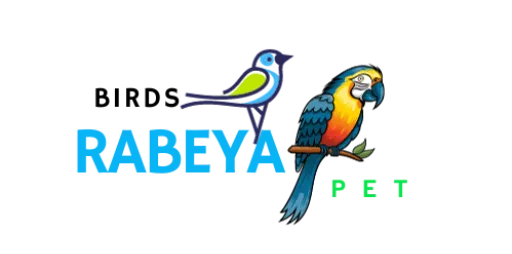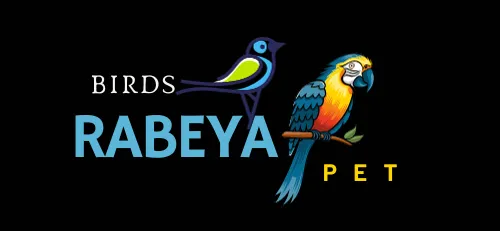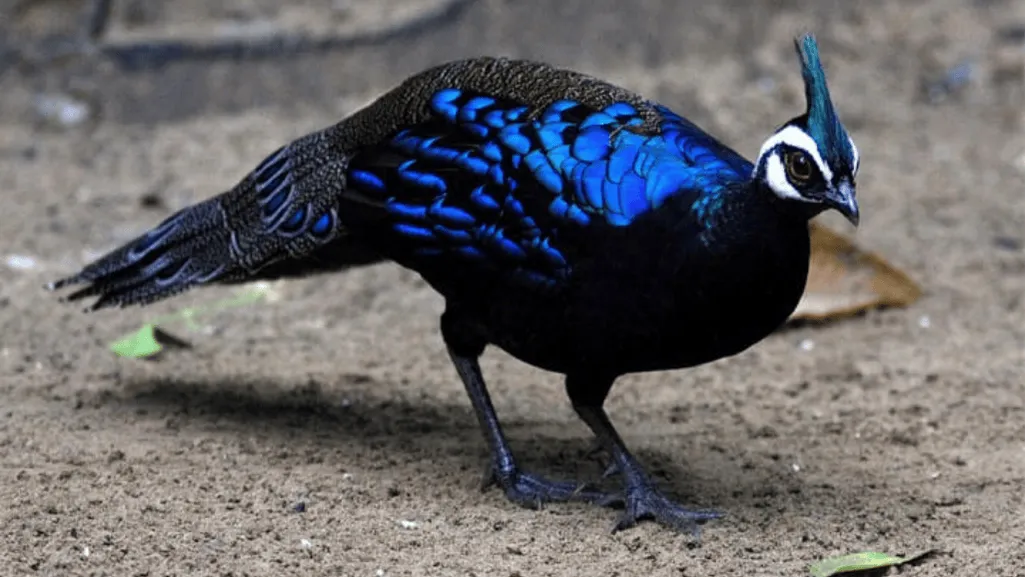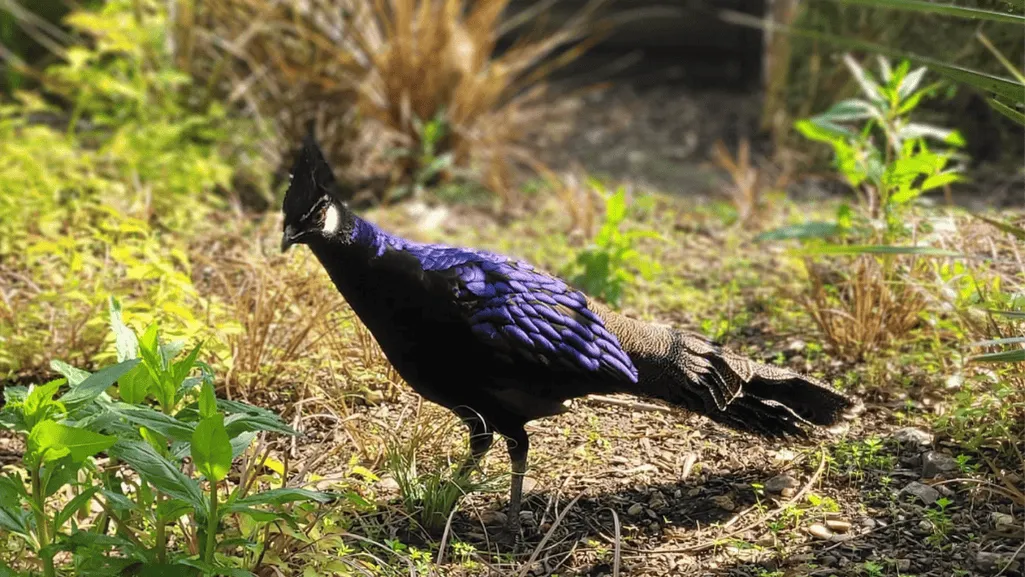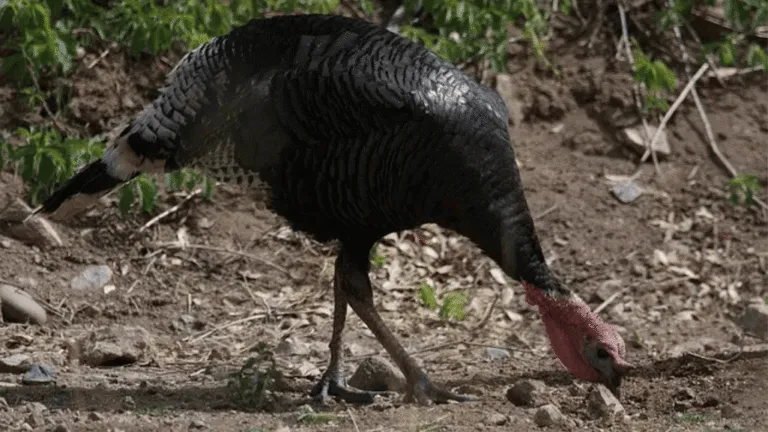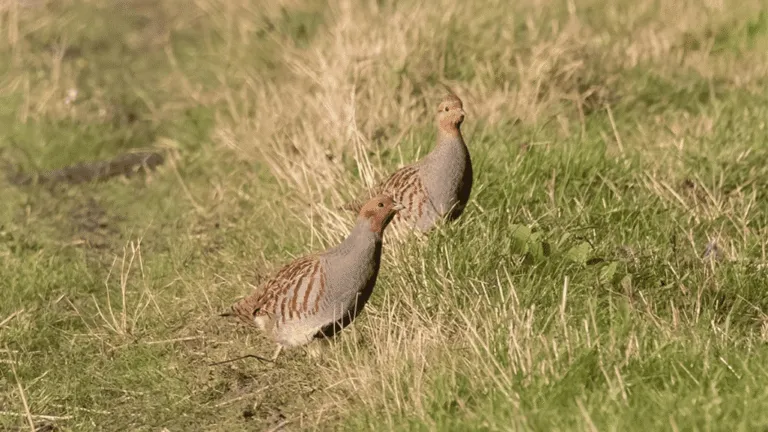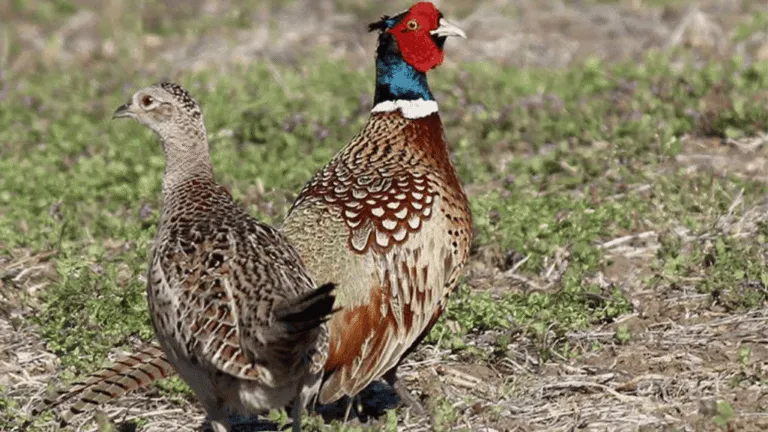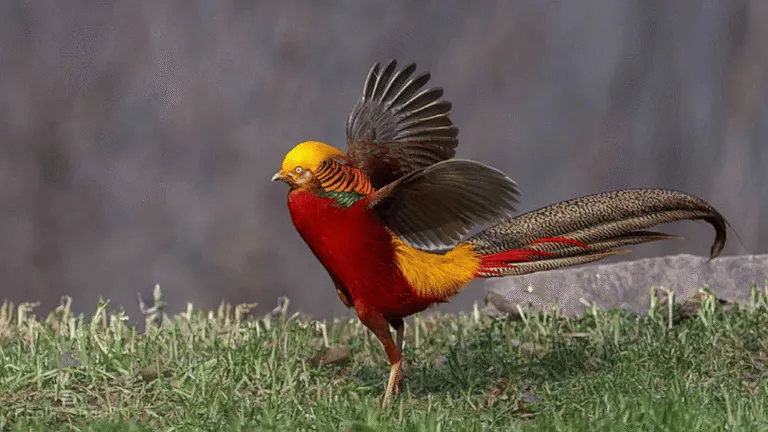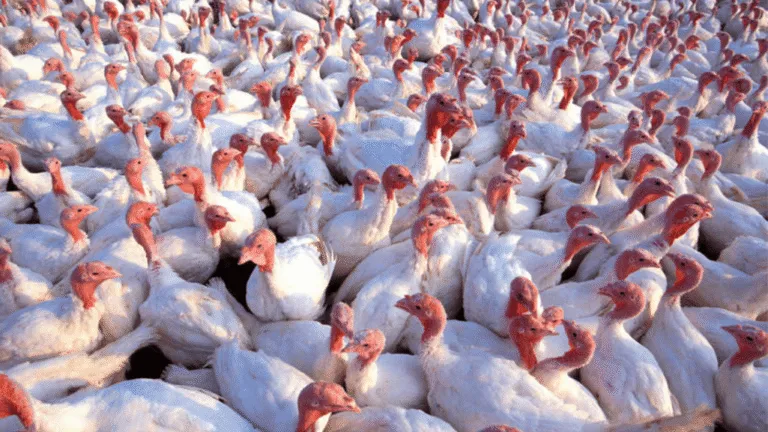The Palawan Peacock-Pheasant, correctly known as Polyplectron napoleonis, is a striking medium-sized bird endemic to the southwestern Philippines, specifically the island of Palawan. Adults typically measure about 18–22 inches (46–56 cm) in length and are notable for their highly iridescent plumage and elaborate tail ocelli that make them one of island Palawan’s most iconic species.
Key Takeaways:
The Palawan Peacock-Pheasant is an endemic species and a distinctive bird of Palawan, Philippines.
Males display vivid blue and black markings and ornate tail ocelli; females are more cryptically colored in brown.
Habitat loss and hunting are the primary threats to the species’ survival.
Targeted conservation efforts are essential to protect this species and its forest habitat.
The Puerto Princesa Subterranean River National Park and surrounding protected areas are important places to look for the species in Puerto Princesa.
Characteristics of the Palawan Peacock-Pheasant
 The Palawan Peacock-Pheasant is a distinctive species endemic to Palawan. Its highly iridescent plumage and ornate tail ocelli make adult birds immediately recognizable in the island’s forests. Males are notably more colorful than females and use visual displays during courtship.
The Palawan Peacock-Pheasant is a distinctive species endemic to Palawan. Its highly iridescent plumage and ornate tail ocelli make adult birds immediately recognizable in the island’s forests. Males are notably more colorful than females and use visual displays during courtship.
Physically, adult males have a predominantly dark body with vivid blue markings on the wings, a finely speckled grayish back and tail, white facial markings, and a conspicuous red eye-ring. The tail bears iridescent ocelli that catch and reflect light, helping produce the species’ famous display. Females are much more cryptic—mostly brown with a pale face—which helps conceal nesting birds from predators.
One commonly reported courtship behavior is “tidbitting,” in which a male offers small food items to a female while performing a strutting display and spreading neck and mantle feathers. Tidbitting and the tail-fanning display together function as signals of the male’s fitness and provisioning ability. Field observations suggest Palawan peacock-pheasant pairs often form long-term bonds, though pair duration varies and should be described cautiously unless supported by a specific study.
Reproduction: females lay a small clutch of eggs in a ground nest; chicks are precocial but require parental protection in early days. Precise clutch size and breeding season timing vary across the species’ range and are subjects for further citation.
Conservation note: because the species has a restricted range and faces habitat loss and hunting pressure, reliable population estimates remain uncertain—current conservation work aims to clarify numbers while protecting remaining forest habitat.
Habitat and Conservation Efforts
The Palawan Peacock-Pheasant occupies the humid lowland and hill forests of Palawan island, where dense understory and leaf litter provide foraging and nesting sites. Because the species has a limited range, ongoing deforestation and forest fragmentation significantly reduce available habitat and disrupt movement between remaining forest patches.
Conservation organizations, local agencies, and some international partners have prioritized measures to protect remaining forests and curb hunting and illegal trade. For example, BirdLife International and Philippine conservation groups work with local communities and government protected-area authorities to strengthen enforcement and habitat protection measures. Several zoos and research institutions have supported captive-breeding and research programs aimed at improving knowledge of the species’ ecology and maintaining genetic diversity for potential future reintroductions—projects that require careful documentation and long-term support.
Practical conservation goals include securing and restoring forest areas within the species’ range, reducing hunting pressure through community engagement and alternative livelihoods, and improving monitoring so population trends can be assessed accurately. Where breeding programs exist, they are coordinated to avoid inadvertent impacts on wild populations and to ensure ethical standards are met.
Conservation Efforts at a Glance:
Restoration of natural habitat Reestablishes contiguous forest areas and improves foraging and nesting sites
Community awareness and livelihoods programs Engage people to reduce hunting and trade while offering sustainable alternatives
Captive-breeding and research Supports population resilience, genetic diversity, and science-based action
How you can help: support accredited conservation organizations, avoid purchasing wildlife or feathers, and promote responsible ecotourism that benefits local communities and protected areas.
Spotting the Palawan Peacock-Pheasant
The Palawan Peacock-Pheasant is a rare endemic species that can still be encountered in suitable forested areas across island Palawan, although habitat loss and hunting have reduced its range. Sightings are more likely in protected forest blocks where disturbance is low and understory remains intact.
One of the best places to try to see this species is the Puerto Princesa Subterranean River National Park (often referenced in guide literature). This protected area and adjacent forested zones provide important habitat for many of Palawan’s wildlife species and can offer opportunities for quiet, early-morning birdwatching.
Population figures reported for particular areas vary widely; some older or broad surveys list large ranges for regional estimates, but these numbers should be treated cautiously until verified by recent field studies. There is no substitute for up-to-date, source-cited population data—consult park authorities, BirdLife International, or recent ecological surveys for the latest figures.
Responsible-spotting tips: visit with authorized guides, go at dawn or dusk when birds are most active, keep noise low, do not feed wildlife, and stay on designated trails or observation hides. Respecting park rules helps protect the species and supports local people who depend on sustainable tourism in the area.
The Beauty of the Palawan Peacock-Pheasant
 The Palawan Peacock-Pheasant is one of the most visually striking birds in the Philippines. Sexual dimorphism is pronounced: males are ornate and showy, while females are cryptically colored to aid camouflage on the forest floor.
The Palawan Peacock-Pheasant is one of the most visually striking birds in the Philippines. Sexual dimorphism is pronounced: males are ornate and showy, while females are cryptically colored to aid camouflage on the forest floor.
Adult males of Polyplectron napoleonis have a dark, glossy body with vivid blue markings on the wings and finely speckled grayish upperparts. The upper tail coverts and tail feathers bear numerous iridescent, eye-shaped spots (ocelli) that are highly iridescent and catch light during displays. The male’s face shows white markings and a red eye-ring that contrasts with the dark head — features often used in field identification.
Females are predominantly brown with a paler face and subtler patterning, which helps conceal nesting birds from predators. In size, adults typically measure about 18–22 inches (46–56 cm) in length; males may appear larger during courtship when crest, neck, and tail feathers are erected.
During courtship the male fans his tail and raises his crest and mantle feathers, rotating to present the ocelli in a circular rdisplay. This combination of tail-fanning and feather erection signals mate quality: bright ocelli, neat feather condition, and vigorous display are indicators females use when selecting a partner.
Comparison and notes: compared with other Polyplectron species, the Palawan peacock-pheasant (napoleonis) is distinctive for its deep blue wing markings and the pattern of ocelli on the upper tail coverts. Males may also show small keratin spurs on the tarsus in some individuals — a detail noted in museum specimens and field guides.
Ethical wildlife photography tip: maintain distance, avoid flash, and minimize disturbance during displays so birds can behave naturally and breeding is not disrupted.
Conclusion
The Palawan Peacock-Pheasant is a range-restricted species native to the forests of Palawan island and faces continuing pressure from habitat loss and hunting. Because of its limited distribution and declining habitat, conservation actions remain essential to secure its future.
Priority actions include restoring and protecting forest habitat, strengthening enforcement against illegal hunting and trade, and supporting scientifically managed captive-breeding and monitoring programs that inform on population trends. Local people and community-based initiatives are central to long-term success, linking conservation with sustainable livelihoods.
Practical ways to help: support accredited conservation organizations (for example those working with BirdLife International partners), follow responsible ecotourism practices in Puerto Princesa and other protected areas, and avoid purchasing wild-caught birds or feathers.
Frequently Asked Questions
What is the Palawan Peacock-Pheasant?
The Palawan Peacock-Pheasant (Polyplectron napoleonis) is a medium-sized, highly iridescent species endemic to island Palawan in the southwestern Philippines.
What is the size of the Palawan Peacock-Pheasant?
Adults typically measure about 18–22 inches (46–56 cm) in length.
What are the main threats to the Palawan Peacock-Pheasant?
Habitat destruction, forest fragmentation, and hunting are the primary threats to wild populations.
Where can I find the Palawan Peacock-Pheasant?
Protected areas such as Puerto Princesa Subterranean River National Park and adjacent forest blocks are among the best places to see the species; always check current guidance from park authorities before visiting.
What does the Palawan Peacock-Pheasant look like?
Males have highly iridescent plumage with distinctive ocelli on the upper tail coverts and blue wing markings; females are browner and more cryptic.
How can we help conserve the Palawan Peacock-Pheasant?
Contribute to credible conservation programs, support habitat protection, promote awareness among local communities, and report illegal wildlife trade to relevant authorities to help safeguard remaining populations.
